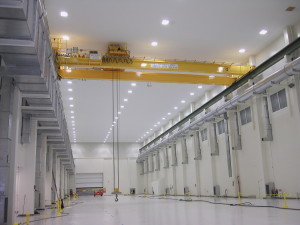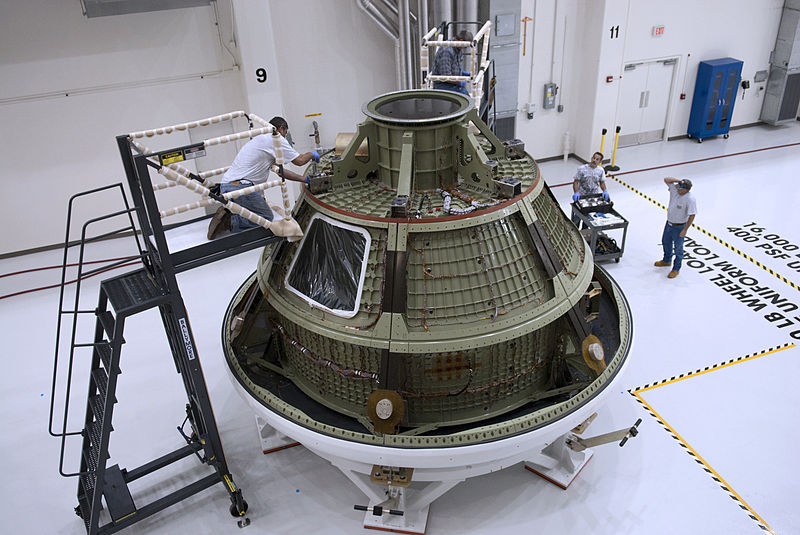Clean Room Cranes: Applications & Features
Leave a CommentAmerican Crane and Equipment Corporation was recently contracted to build a critical lift crane. We produced a customized 25 Ton Top Running Double Girder Crane, which was installed at the Kennedy Space Center and used to build the Orion spacecraft.
This crane was not only a critical lift crane, but it was also a clean room crane.
 Clean Room
Clean Room
A clean room is a manufacturing environment that, because of product requirements, must be kept as free from environmental pollutants as possible. Industries that commonly have clean room requirements include the electronics, food, beverage, pharmaceutical, and, as was the case with the Orion spacecraft, aerospace industries.
The food, beverage, and pharmaceutical industries produce products that are ingested by humans, so those products must be contaminate-free. Products produced in the electronics and aerospace industries are sensitive and could fail if exposed to contamination during production.
Because freedom from contamination is so important to the products developed in clean rooms, all equipment introduced into clean rooms — including critical lift cranes — must comply with strict clean room standards.
American Crane’s Clean Room Features
To meet NASA’s stringent clean room standards, American Crane designed their critical lift crane with these special features:
- All fasteners are stainless steel and self-locking to ensure that no bolts or debris fall from the crane
- The walkways are equipped with continuous kick plates to capture any dirt or debris
- Stainless steel diamond-shaped track is used with the festoons to eliminate places that debris could gather
- The runway conductor bars are covered in extruded plastic to prevent debris from escaping
- There is a debris shield underneath the lower block to prevent any wire rope debris from reaching components of the Orion spacecraft
- All electrical enclosures are shielded to ensure that no RFI or EMI reach the spacecraft
- All axes of movement have extremely slow speeds, less than two inches per minute, to allow for the successful mating of critical components without risk of collision or damage
- The crane control system utilizes a “watchdog” PLC system that checks each movement against what the operator commanded and stops erroneous motion.
For more information about American Crane and how we can custom build cranes that meet your clean room requirements, contact us today.





 Resources:
Resources: 